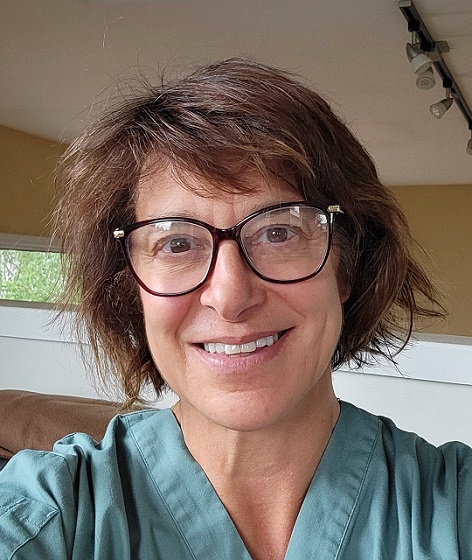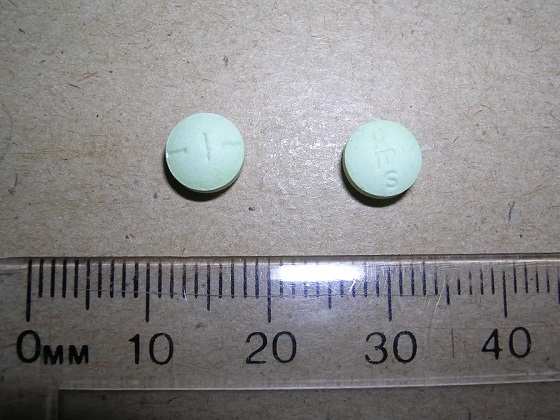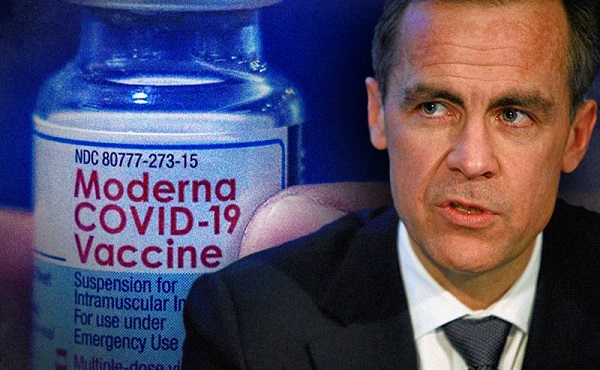Addictions
“Safer supply” reminiscent of the OxyContin crisis, warns addiction physician

Dr. Lori Regenstreif, MD, MSc, CCFP (AM), FCFP, MScCH (AMH), CISAM, has been working as an addiction medicine physician in inner city Hamilton, Ontario, since 2004. She co-founded the Shelter Health Network in 2005 and the Hamilton Clinic’s opioid treatment clinic in 2010, and helped found the St. Joseph’s Hospital Rapid Access Addiction Medicine (RAAM) clinic.
|
[This article is part of Break The Needle’s “Experts Speak Up” series, which documents healthcare professionals’ experiences with Canada’s “safer supply” programs] By: Liam Hunt
Dr. Lori Regenstreif, an addiction physician with decades of experience on the frontlines of Canada’s opioid crisis, is sounding the alarm about the country’s rapidly expanding “safer supply” programs.
While proponents of safe supply contend that providing drug users with free tablets of hydromorphone – a pharmaceutical opioid roughly as potent as heroin – can mitigate harms, Dr. Regenstreif expresses grave concern that these programs may inadvertently perpetuate new addictions and entrench existing opioid use.
She sees ominous similarities between safer supply and the OxyContin crisis of the late 1990s, when the widespread overprescribing of opioids flooded North American communities with narcotics, sparking an addiction crisis that continues to this day. Having witnessed the devastating consequences of OxyContin in the late 1990s, she believes that low-quality and misleading research is once again encouraging dangerous overprescribing practices.
Flashbacks to the OxyContin Crisis
Soon after Dr. Regenstreif received her medical license in Canada, harm reduction became the primary framework guiding her practice in inner-city Vancouver. This period coincided with Health Canada’s 1996 regulatory approval of oxycodone (brand name: OxyContin) based on trials, sponsored by Purdue Pharma, that failed to assess the serious risks of misuse or addiction.
Dr. Regenstreif subsequently witnessed highly addictive prescription opioids flood North American streets while Purdue and its distributors reaped record profits at the expense of vulnerable communities. “That was really peaking in the late 90s as I was coming into practice,” she recounted during an extended interview with Break The Needle. “I was being pressured to prescribe it as well.”
Oxycodone addiction led to the deaths of tens of thousands of individuals in the United States and Canada. As a result, Purdue Pharma faced criminal penalties, fines, and civil settlements amounting to 8.5 billion USD, ultimately leading to the company’s bankruptcy in 2019.
During the OxyContin crisis, patients would regularly procure large amounts of pharmaceutical opioids for resale on the black market – a process known as “diversion.” Dr. Regenstreif has seen alarming indications that safer supply hydromorphone is being diverted at similarly high levels, and estimated that, out of her patient pool, “15 to 20 out of maybe 40 people who have to go to a pharmacy frequently” have reported witnessing diversion.
Between one to two thirds of her new patients have told her that they are accessing diverted hydromorphone tablets – in many cases, the tablets almost certainly originate from safer supply.
Injecting crushed hydromorphone tablets pose severe health risks, including endocarditis and spinal abscesses. “I’ve seen people become quadriplegic and paraplegic because the infection invaded their spinal cord and damaged their nervous system,” said Dr. Regenstreif. While infections can be mitigated by reducing the number of times drug users inject drugs into their bodies, she says that safer supply programs do not discourage or reduce injections.
She further noted, “I’ve seen a teenager in [the] hospital getting their second heart valve replacement because they continue to inject after the first one.” The pill that nearly stopped the patient’s heart was one of the tens of thousands of hydromorphone tablets handed out daily via Canadian safe supply programs.
Her experiences are consistent with preliminary data from a scientific paper published by JAMA Internal Medicine in January, which found that safe supply distribution in British Columbia is associated with a “substantial” increase in opioid-related hospitalizations, rising by 63% over the first two years of program implementation — all without reducing deaths by a statistically significant margin.
While Dr. Regenstreif has worked in a variety of settings, from Ontario’s youth correctional system to Indigenous healing facilities in the Northwest Territories, her experiences in Australia, where she worked during a sabbatical year from 2013 to 2014, were particularly educational.
Australia has far fewer opioid-related deaths than Canada – in 2021, opioid mortality rates were 3.8 per 100,000 in Australia and 21 per 100,000 in Canada (a difference of over 500%). Dr. Regenstreif credited this difference to Australia’s comparatively controlled opioid landscape, where access to pharmaceutical narcotics is tightly regulated.
“Heroin had been a long-standing street opioid. It was really the only opioid you tended to see, because the only other ones people could get a prescription for were over-the-counter, low-potency codeine tablets,” she said. To this day, opioid prescriptions in Australia require special approval for repeat supplies, preventing stockpiling and street diversion.
No real evidence supports “safer supply”
Critics and whistleblowers have argued that Canadian safe supply programs, which have received over $100 million in federal funding through Health Canada’s Substance Use and Addictions Program (SUAP), were initiated without adhering to the rigorous evidentiary standards typically required to classify medication as “safe.”
Dr. Regenstreif shares these concerns and says that no credible studies show that safer supply saves lives, and that little effort is invested into exploring its possible risks and unintended consequences – such as increased addiction, hospitalization, overdose and illicit diversion to youth and vulnerable individuals.
Most studies which support the experiment simply interview recipients of safer supply and then present their answers as objective evidence of success. Dr. Regenstreif criticized these qualitative studies as methodologically flawed “customer satisfaction surveys,” as they are “very selective” and rely on small, bias-prone samples.
“If you have 400 people in a program, and you get feedback from 12, and 90% of those 12 said X, that’s not [adequate] data,” said Dr. Regenstreif, criticizing the lack of follow-up often shown safer supply researchers. “Nobody seems to track down the […] people who were not included. Did they get kicked out of the program? [Did they engage in] diversion? Did they die? We’re not hearing about that. It doesn’t make any sense in an empirical scientific universe.”
Safe supply advocates typically argue that opioids themselves are not problematic, but rather their unregulated and illicit supply, as this allows for contaminants and unpredictable dosing. However, studies have found that opioid-related deaths rise when narcotics, legal or not, are more widely available.
Dr. Regensteif is calling upon harm reduction researchers to build a more robust evidence base before calling for the expansion of safer supply. That includes more methodologically rigorous and transparent quantitative research to evaluate the full impact of Canada’s harm reduction strategies. Forgoing this evidence or adequate risk-prevention measures could lead to consequences as catastrophic as those resulting from Purdue’s deceptive marketing of OxyContin, she said.
Subscribe to our newsletter to get our latest news and analysis – or donate to our investigative journalism fund.
Critics propose solutions despite bullying
Dr. Regenstreif has faced pressure and exclusion for speaking out against safe supply. She estimates that while only a quarter of her local colleagues shared her doubts a few years ago, “now I would say more than half” harbor the same concerns. However, many are reluctant to voice their reservations publicly, fearing professional or social repercussions. “People who don’t want to speak out don’t want to be labeled as right-wing […] they don’t want to be labeled as conservative.”
While she acknowledges that safe supply may play a limited role for a small subset of patients, she believes it has been oversold as a panacea without adequate safeguards or due evaluation. “It doesn’t seem as if policymakers are listening to the people on the ground who have experience in doing this,” she said.
She contends that the solution to Canada’s addiction crisis lies in a more holistic, recovery-oriented approach that includes all four pillars of addiction: harm reduction, prevention, treatment, and enforcement. Her vision includes a national network of publicly-funded, rapid-access addiction medicine clinics with integrated counseling and wraparound services.
Additionally, Dr. Regenstreif stresses the importance of building upon established opioid agonist treatments (OAT), like methadone and buprenorphine, rather than solely relying on novel approaches whose social and medical risks are not yet fully understood.
At the core of Dr. Regenstreif’s advocacy lies a profound dedication to her patients and to the science of addiction medicine. “I like to think I kind of am fear-mongering with my patients, [by] trying to make them afraid of not getting better,” she explains. “I don’t want them to end up in the hospital and not come back out. I don’t want them to end up dead.”
[This article has been co-published with The Bureau, a Canadian media outlet that tackles corruption and foreign influence campaigns through investigative journalism. Subscribe to their work to get the latest updates on how organized crime influences the Canadian drug trade.]
Addictions
Why B.C.’s new witnessed dosing guidelines are built to fail

Photo by Acceptable at English Wikipedia, ‘Two 1 mg pills of Hydromorphone, prescribed to me after surgery.’ [Licensed under CC BY-SA 3.0, via Wikimedia Commons]
By Alexandra Keeler
B.C. released new witnessed dosing guidelines for safer supply opioids. Experts say they are vague, loose and toothless
This February, B.C pledged to reintroduce witnessed dosing to its controversial safer supply program.
Safer supply programs provide prescription opioids to people who use drugs. Witnessed dosing requires patients to consume those prescribed opioids under the supervision of a health-care professional, rather than taking their drugs offsite.
The province said it was reintroducing witnessed dosing to “prevent the diversion of prescribed opioids and hold bad actors accountable.”
But experts are saying the government’s interim guidelines, released April 29, are fundamentally flawed.
“These guidelines — just as any guidelines for safer supply — do not align with addiction medicine best practices, period,” said Dr. Leonara Regenstreif, a primary care physician specializing in substance use disorders. Regenstreif is a founding member of Addiction Medicine Canada, an advocacy group that represents 23 addiction specialists.
Addiction physician Dr. Michael Lester, who is also a founding member of the group, goes further.
“Tweaking a treatment protocol that should not have been implemented in the first place without prior adequate study is not much of an advancement,” he said.
Witnessed dosing
Initially, B.C.’s safer supply program was generally administered through witnessed dosing. But in 2020, to facilitate access amidst pandemic restrictions, the province moved to “take-home dosing,” allowing patients to take their prescription opioids offsite.
After pandemic restrictions were lifted, the province did not initially return to witnessed dosing. Rather, it did so only recently, after a bombshell government report alleged more than 60 B.C. pharmacies were boosting sales by encouraging patients to fill unnecessary opioid prescriptions. This incentivized patients to sell their medications on the black market.
B.C.’s interim guidelines, developed by the BC Centre on Substance Use at the government’s request, now require all new safer supply patients to begin with witnessed dosing.
But for existing patients, the guidelines say prescribers have discretion to determine whether to require witnessed dosing. The guidelines define an existing patient as someone who was dispensed prescription opioids within the past 30 days.
The guidelines say exemptions to witnessed dosing are permitted under “extraordinary circumstances,” where witnessed dosing could destabilize the patient or where a prescriber uses “best clinical judgment” and determines diversion risk is “very low.”
Holes
Clinicians say the guidelines are deliberately vague.
Regenstreif described them as “wordy, deliberately confusing.” They enable prescribers to carry on as before, she says.
Lester agrees. Prescribers would be in compliance with these guidelines even if “none of their patients are transferred to witnessed dosing,” he said.
In his view, the guidelines will fail to meet their goal of curbing diversion.
And without witnessed dosing, diversion is nearly impossible to detect. “A patient can take one dose a day and sell seven — and this would be impossible to detect through urine testing,” Lester said.
He also says the guidelines do not remove the incentive for patients to sell their drugs to others. He cites estimates from Addiction Medicine Canada that clients can earn up to $20,000 annually by selling part of their prescribed supply.
“[Prescribed safer supply] can function as a form of basic income — except that the community is being flooded with addictive and dangerous opioids,” Lester said.
Regenstreif warns that patients who had been diverting may now receive unnecessarily high doses. “Now you’re going to give people a high dose of opioids who don’t take opioids,” she said.
She also says the guidelines leave out important details on adjusting doses for patients who do shift from take-home to witnessed dosing.
“If a doctor followed [the guidelines] to the word, and the patient followed it to the word, the patient would go into withdrawal,” she said.
The guidelines assume patients will swallow their pills under supervision, but many crush and inject them instead, Regenstreif says. Because swallowing is less potent, a higher dose may be needed.
“None of that is accounted for in this document,” she said.
Survival strategy
Some harm reduction advocates oppose a return to witnessed dosing, saying it will deter people from accessing a regulated drug supply.
Some also view diversion as a life-saving practice.
Diversion is “a harm reduction practice rooted in mutual aid,” says a 2022 document developed by the National Safer Supply Community of Practice, a group of clinicians and harm reduction advocates.
The group supports take-home dosing as part of a broader strategy to improve access to safer supply medications. In their document, they say barriers to accessing safer supply programs necessitate diversion among people who use drugs — and that the benefits of diversion outweigh the risks.
However, the risks — and harms — of diversion are mounting.
People can quickly develop a tolerance to “safer” opioids and then transition to more dangerous substances. Some B.C. teenagers have said the prescription opioid Dilaudid was a stepping stone to them using fentanyl. In some cases, diversion of these drugs has led to fatal overdoses.
More recently, a Nanaimo man was sentenced to prison for running a highly organized drug operation that trafficked diverted safer supply opioids. He exchanged fentanyl and other illicit drugs for prescription pills obtained from participants in B.C.’s safer supply program.
Recovery
Lester, of Addiction Medicine Canada, believes clinical discretion has gone too far. He says take-home dosing should be eliminated.
“Best practices in addiction medicine assume physicians prescribing is based on sound and thorough research, and ensuring that their prescribing does not cause harm to the broader community, as well as the patient,” he said.
“[Safer supply] for opioids fails in both these regards.”
He also says safer supply should only be offered as a short-term bridge to patients being started on proven treatments like buprenorphine or methadone, which help reduce drug cravings and manage withdrawal symptoms.
B.C.’s witnessed dosing guidelines say prescribers can discuss such treatment options with patients. However, the guidelines remain neutral on whether safer supply is intended as a transitional step toward longer-term treatment.
Regenstreif says this neutrality undermines care.
“[M]ost patients I’ve seen with opioid use disorder don’t want to have [this disorder],” she said. “They would rather be able to set goals and do other things.”
Oversight gaps
Currently, about 3,900 people in B.C. participate in the safer supply program — down from 5,200 in March 2023.
The B.C. government has not provided data on how many have been transitioned to witnessed dosing. Investigative journalist Rob Shaw recently reported that these data do not exist.
“The government … confirmed recently they don’t have any mechanism to track which ‘safe supply’ participants are witnessed and which [are] not,” said Elenore Sturko, a Conservative MLA for Surrey-Cloverdale, who has been a vocal critic of safer supply.
“Without a public report and accountability there can be no confidence.”
The BC Centre on Substance Use, which developed the interim guidelines, says it does not oversee policy decisions or data tracking. It referred Canadian Affairs’ questions to B.C.’s Ministry of Health, which has yet to clarify whether it will track and publish transition data. The ministry did not respond to requests for comment by deadline.
B.C. has also not indicated when or whether it will release final guidelines.
Regenstreif says the flawed guidelines mean many people may be misinformed, discouraged or unsupported when trying to reduce their drug use and recover.
“We’re not listening to people with lived experience of recovery,” she said.
This article was produced through the Breaking Needles Fellowship Program, which provided a grant to Canadian Affairs, a digital media outlet, to fund journalism exploring addiction and crime in Canada. Articles produced through the Fellowship are co-published by Break The Needle and Canadian Affairs.
Subscribe to Break The Needle
Addictions
‘Over and over until they die’: Drug crisis pushes first responders to the brink

First responders say it is not overdoses that leave them feeling burned out—it is the endless cycle of calls they cannot meaningfully resolve
The soap bottle just missed his head.
Standing in the doorway of a cluttered Halifax apartment, Derek, a primary care paramedic, watched it smash against the wall.
Derek was there because the woman who threw it had called 911 again — she did so nearly every day. She said she had chest pain. But when she saw the green patch on his uniform, she erupted. Green meant he could not give her what she wanted: fentanyl.
She screamed at him to call “the red tags” — advanced care paramedics authorized to administer opioids. With none available, Derek declared the scene unsafe and left. Later that night, she called again. This time, a red-patched unit was available. She got her dose.
Derek says he was not angry at the woman, but at the system that left her trapped in addiction — and him powerless to help.
First responders across Canada say it is not overdoses that leave them feeling burned out — it is the endless cycle of calls they cannot meaningfully resolve. Understaffed, overburdened and dispatched into crises they are not equipped to fix, many feel morally and emotionally drained.
“We’re sending our first responders to try and manage what should otherwise be dealt with at structural and systemic levels,” said Nicholas Carleton, a University of Regina researcher who studies the mental health of public safety personnel.
Canadian Affairs agreed to use pseudonyms for the two frontline workers referenced in this story. Canadian Affairs also spoke with nine other first responders who agreed to speak only on background. All of these sources cited concerns about workplace retaliation for speaking out.
Moral injury
Canada’s opioid crisis is pushing frontline workers such as paramedics to the brink.
A 2024 study of 350 Quebec paramedics shows one in three have seriously considered suicide. Globally, ambulance workers have among the highest suicide rates of public service personnel.
Between 2017 and 2024, Canadian paramedics responded to nearly 240,000 suspected opioid overdoses. More than 50,000 of those were fatal.
Yet many paramedics say overdose calls are not the hardest part of the job.
“When they do come up, they’re pretty easy calls,” said Derek. Naloxone, a drug that reverses overdoses, is readily available. “I can actually fix the problem,” he said. “[It’s a] bit of instant gratification, honestly.”
What drains him are the calls they cannot fix: mental health crises, child neglect and abuse, homelessness.
“The ER has a [cardiac catheterization] lab that can do surgery in minutes to fix a heart attack. But there’s nowhere I can bring the mental health patients.
“So they call. And they call. And they call.”
Thomas, a primary care paramedic in Eastern Ontario, echoes that frustration.
“The ER isn’t a good place to treat addiction,” he said. “They need intensive, long-term psychological inpatient treatment and a healthy environment and support system — first responders cannot offer that.”
That powerlessness erodes trust. Paramedics say patients with addictions often become aggressive, or stop seeking help altogether.
“We have a terrible relationship with the people in our community struggling with addiction,” Thomas said. “They know they will sit in an ER bed for a few hours while being in withdrawals and then be discharged with a waitlist or no follow-up.”
Carleton, of the University of Regina, says that reviving people repeatedly without improvement decreases morale.
“You’re resuscitating someone time and time again,” said Carleton, who is also director of the Psychological Trauma and Stress Systems Lab, a federal unit dedicated to mental health research for public safety personnel. “That can lead to compassion fatigue … and moral injury.”
Katy Kamkar, a clinical psychologist focused on first responder mental health, says moral injury arises when workers are trapped in ethically impossible situations — saving a life while knowing that person will be back in the same state tomorrow.
“Burnout is … emotional exhaustion, depersonalization, and reduced personal accomplishment,” she said in an emailed statement. “High call volumes, lack of support or follow-up care for patients, and/or bureaucratic constraints … can increase the risk of reduced empathy, absenteeism and increased turnover.”
Kamkar says moral injury affects all branches of public safety, not just paramedics. Firefighters, who are often the first to arrive on the scene, face trauma from overdose deaths. Police report distress enforcing laws that criminalize suffering.
Understaffed and overburdened
Staffing shortages are another major stressor.
“First responders were amazing during the pandemic, but it also caused a lot of fatigue, and a lot of people left our business because of stress and violence,” said Marc-André Périard, vice president of the Paramedic Chiefs of Canada.
Nearly half of emergency medical services workers experience daily “Code Blacks,” where there are no ambulances available. Vacancy rates are climbing across emergency services. The federal government predicts paramedic shortages will persist over the coming decade, alongside moderate shortages of police and firefighters.
Unsafe work conditions are another concern. Responders enter chaotic scenes where bystanders — often fellow drug users — mistake them for police. Paramedics can face hostility from patients they just saved, says Périard.
“People are upset that they’ve been taken out of their high [when Naloxone is administered] and not realizing how close to dying they were,” he said.
Thomas says safety is undermined by vague, inconsistently enforced policies. And efforts to collect meaningful data can be hampered by a work culture that punishes reporting workplace dangers.
“If you report violence, it can come back to haunt you in performance reviews” he said.
Some hesitate to wait for police before entering volatile scenes, fearing delayed response times.
“[What] would help mitigate violence is to have management support their staff directly in … waiting for police before arriving at the scene, support paramedics in leaving an unsafe scene … and for police and the Crown to pursue cases of violence against health-care workers,” Thomas said.
“Right now, the onus is on us … [but once you enter], leaving a scene is considered patient abandonment,” he said.
Upstream solutions
Carleton says paramedics’ ability to refer patients to addiction and mental health referral networks varies widely based on their location. These networks rely on inconsistent local staffing, creating a patchwork system where people easily fall through the cracks.
“[Any] referral system butts up really quickly against the challenges our health-care system is facing,” he said. “Those infrastructures simply don’t exist at the size and scale that we need.”
Périard agrees. “There’s a lot of investment in safe injection sites, but not as much [resources] put into help[ing] these people deal with their addictions,” he said.
Until that changes, the cycle will continue.
On May 8, Alberta renewed a $1.5 million grant to support first responders’ mental health. Carleton welcomes the funding, but says it risks being futile without also addressing understaffing, excessive workloads and unsafe conditions.
“I applaud Alberta’s investment. But there need to be guardrails and protections in place, because some programs should be quickly dismissed as ineffective — but they aren’t always,” he said.
Carleton’s research found that fewer than 10 mental health programs marketed to Canadian governments — out of 300 in total — are backed up by evidence showing their effectiveness.
In his view, the answer is not complicated — but enormous.
“We’ve got to get way further upstream,” he said.
“We’re rapidly approaching more and more crisis-level challenges… with fewer and fewer [first responders], and we’re asking them to do more and more.”
This article was produced through the Breaking Needles Fellowship Program, which provided a grant to Canadian Affairs, a digital media outlet, to fund journalism exploring addiction and crime in Canada. Articles produced through the Fellowship are co-published by Break The Needle and Canadian Affairs.
-

 Addictions1 day ago
Addictions1 day agoWhy B.C.’s new witnessed dosing guidelines are built to fail
-

 Frontier Centre for Public Policy2 days ago
Frontier Centre for Public Policy2 days agoCanada’s New Border Bill Spies On You, Not The Bad Guys
-

 Business1 day ago
Business1 day agoCarney Liberals quietly award Pfizer, Moderna nearly $400 million for new COVID shot contracts
-

 Energy2 days ago
Energy2 days agoCNN’s Shock Climate Polling Data Reinforces Trump’s Energy Agenda
-

 Opinion1 day ago
Opinion1 day agoCharity Campaigns vs. Charity Donations
-

 Business1 day ago
Business1 day agoMark Carney’s Fiscal Fantasy Will Bankrupt Canada
-

 COVID-191 day ago
COVID-191 day agoTrump DOJ dismisses charges against doctor who issued fake COVID passports
-

 Opinion1 day ago
Opinion1 day agoPreston Manning: Three Wise Men from the East, Again






